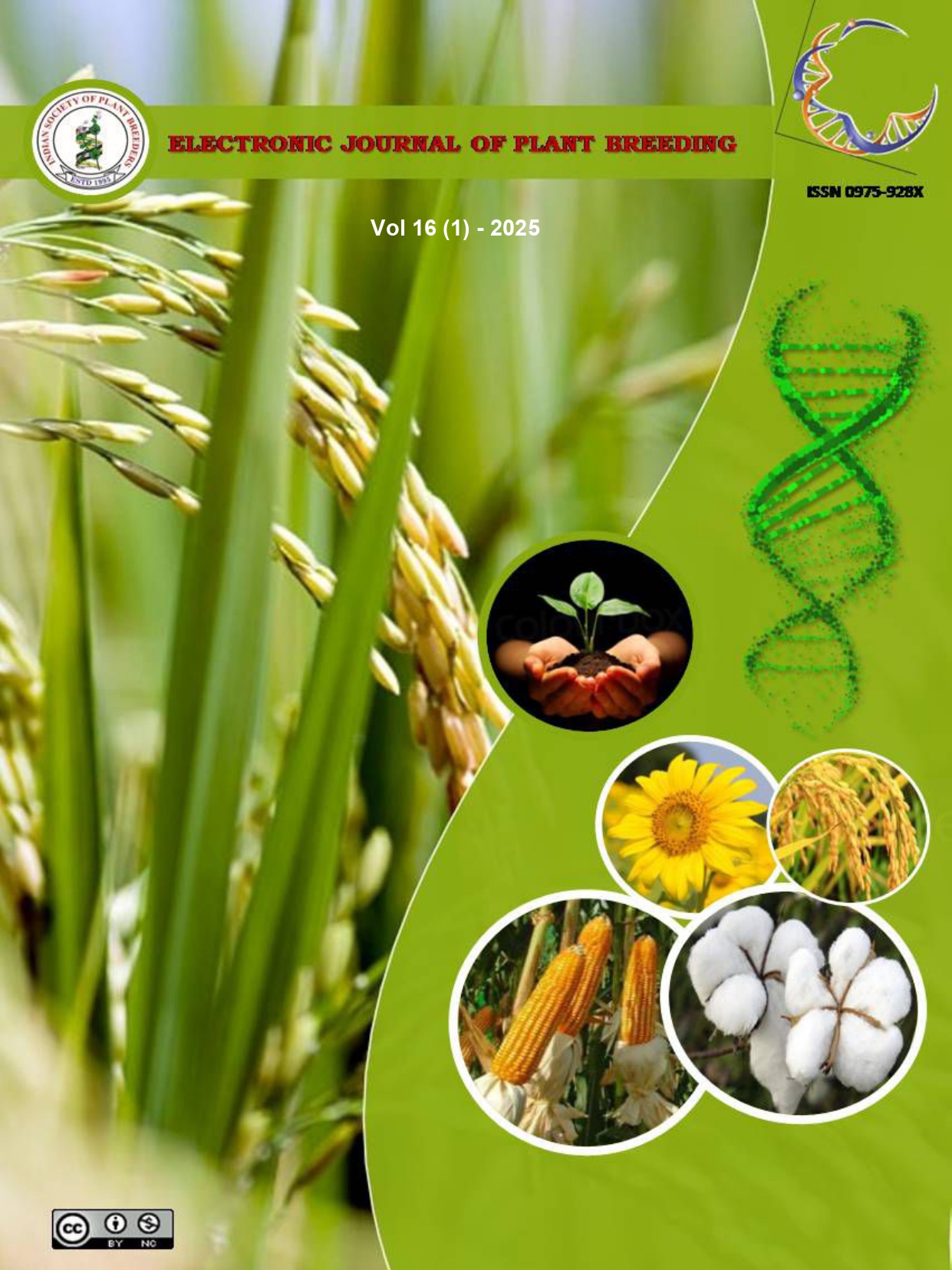Rice kernel morphometrics: Exploring the physical dimensions of indigenous traditional landrace diversity through physio metric studies
DOI: 10.37992/2025.1601.008
Abstract
Development and widespread adoption of modern rice varieties has led bottlenecking of many beneficial alleles and there is a significant decline in the cultivation of traditional landraces, which results in substantial loss of genetic diversity. The varied consumer preference in terms of eating habit and other preparations in rice sustains the diversity in the grains. Hence, present day market trend in rice revolves around the choice of consumers which are mainly based on the physical characteristics of rice. To categorize rice based on kernel characteristics, in this study, a total of 500 rice genotypes were taken for assessing the physical properties of kernel viz., seed length, seed width, length/width ratio, seed thickness, bulk density, geometric mean diameter, sphericity, aspect ratio and hundred seed weight. All the traits exhibited ample amount of significant variations (P<0.05). High GCV was exhibited by bulk density and high heritability was observed by hundred seed weight, seed thickness, bulk density and seed width indicating that these traits were highly influenced by genetic factor and less influence of environment. Among these traits, hundred seed weight, seed thickness, bulk density and seed width exhibited high heritability coupled with high genetic advance as per cent of mean indicating the additive gene action and amenable for selection. Principal component analysis observed that the first three principle components explained most of the total variations present in the studied genotypes. Specifically, the first principal component (PC1) contributed the most, representing 35.24% of the variability followed by PC2 and PC3. In view of size and shape, most rice genotypes exhibited kernels that were predominantly short and narrow, succeeded by those that were short and of medium width. To categorise the seed diversity among the kernels of landraces, Mahalanobis D2 statistics analysis was performed. Based on this the 500 rice landraces were grouped into five distinct clusters. Among the clusters, the Cluster II predominantly comprised kernels of medium and short lengths, medium widths. In contrast, Cluster V predominantly featured grains of very short lengths, narrow to very narrow widths. From the five clusters, four genotypes per cluster emphasising high mean value for bold and slender shape were selected for observation of cooking quality traits. During cooking, grain expands in all the dimensions but usually more in length. The gelatinization temperature based on alkali digestion values showed that 16 rice genotypes had low alkali spreading values, leading to stickier rice. Meanwhile, four genotypes exhibited intermediate alkali spreading values, which are preferred for parboiling. Therefore, an understanding on the kernel architecture and grouping them based on the physical dimensions like seed thickness, seed width, and bulk density, as well as kernel colour along with hundred seed weight will be useful in formulating breeding programme for kernel traits or consumer preferences. This selection aimed to align breeding goals with market needs, guaranteeing economic feasibility and sustainability in rice farming.
Keywords: Rice, physical properties,variability, principle components, diversity, cooking traits
Rice kernel morphometrics: Exploring the physical dimensions of indigenous traditional landrace diversity through physio metric studies
. 2025. Electronic Journal of Plant Breeding, 16 1, 46-56. Retrieved from https://ejplantbreeding.org/index.php/EJPB/article/view/5256It is certified that:
- The corresponding author is fully responsible for any disputes arising due to the publication of his/her manuscript.
- The article has been seen by all the authors who are satisfied with its form and content.
- The sequence of names of authors in the by-line is as per their relative contribution to this experiment, giving due credit to all scientists who made notable contribution to it.
- All the authors fully understand that inclusion of any other co-authors or exclusion of any co-authors is not possible once the article has been submitted to the journal.
- The corresponding author takes full responsibility for this article.
- The address of the organization where the research was conducted is given.
- The article is exclusive for this journal, and the results reported here have not been sent (and will not be sent during its consideration by this journal) for publication in any other journal.
- Authors agree to abide by the objective comments of referees and do agree to modify the article into a short note as per the recommendation, for publication in the Electronic Journal of Plant Breeding.
- If published in Electronic Journal of Plant Breeding, the copyright of this article would vest with the Indian Society of Plant Breeders, who will have the right to enter into any agreement with any organization in India or abroad engaged in reprography, photocopying, storage and dissemination of information contained in it, and neither we nor our legal heirs will have any claims on royalty.



